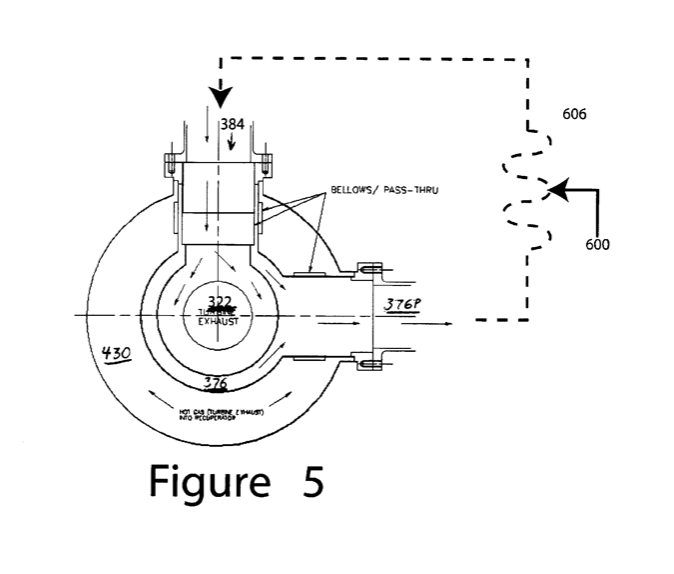microturbine – a different spin on solar energy
Capstone Turbine announced receiving an order from Israel-based HelioFocus for the modification and development of a C65 microturbine to operate on solar energy. While photovoltaic (PV) based solar systems are becoming the standard, the announced system considers an alternate way of capturing solar energy.
In a solar turbine, solar energy is the heat source instead of fuel. It is said the current system will run on fuel when there is insufficient sunlight, such as at night. So far, so good; solar energy by day and fuel at night.
There are some interesting bits of technology here. For starters, one has to collect the solar energy and impart a sufficient temperature rise to the air, all at a sufficient flow rate to keep the turbine “fed”. One also has to switch between solar energy and fuel. It is time to explore a few patents that might address these challenges.
United States Patent 6,748,742 (‘742 patent), assigned to Capstone, discloses a turbine system capable of using multiple fuel sources, a control system therefore and a method of operation thereof. Of interest here is Figure 5, which is reproduced below. It shows a partial section end view of a turbine incorporating an external heat source 600. Connection 376, collects air from the compressor. This air flows through compressor discharge port 376P and travels through heat exchanger/mixer 606 where it is heated by external heat source 600. Heated air is brought back to the turbine via inlet port 384. In the current system, external heat source 600 would be solar energy and the exchanger 606 would be a device appropriate for transferring this energy to the air.
The bigger challenge is heating the air. A bit of digging found a Prof. Jacob Karni associated with HelioFocus. From there, United States Patent 7,042,857 (the ‘857 patent) to Karni comes to light. The ‘857 patent discloses “A Solar Receiver with a Plurality of Working Fluid Inlets”, which might be suitable for use as the exchanger 606 of the ‘742 patent. Figure 1 of the ‘857 patent, reproduced below, presents a solar receiver 2, having a receiver chamber 12, inlet ports 17a-17d and outlet port 18. The nature of the fluid flow from inlets 17a-17d is discussed, as is the use of solar energy absorbing particles within the fluid to assist in the transfer of energy to the fluid. It is also mentioned that the receiver may implement a single inlet for the working fluid, which may be free of absorbing particles. Test results presented in Table 1 indicate an air exit temperature of 1630 ºC for a particle loading of 4.5 g/m³. This incorporation of test data for a fluid having particles suggests this is the approach of interest.
This briefest of surveys found patents disclosing technology associated with allowing multiple fuels and the transfer of energy to the air, and impart a rise in temperature. These are early days, but further down the road system cost, efficiency and real estate requirements will be of interest. It will also be of interest to see if the above technology becomes part of any system. The transfer of energy still seems to be an area of interest and development.



